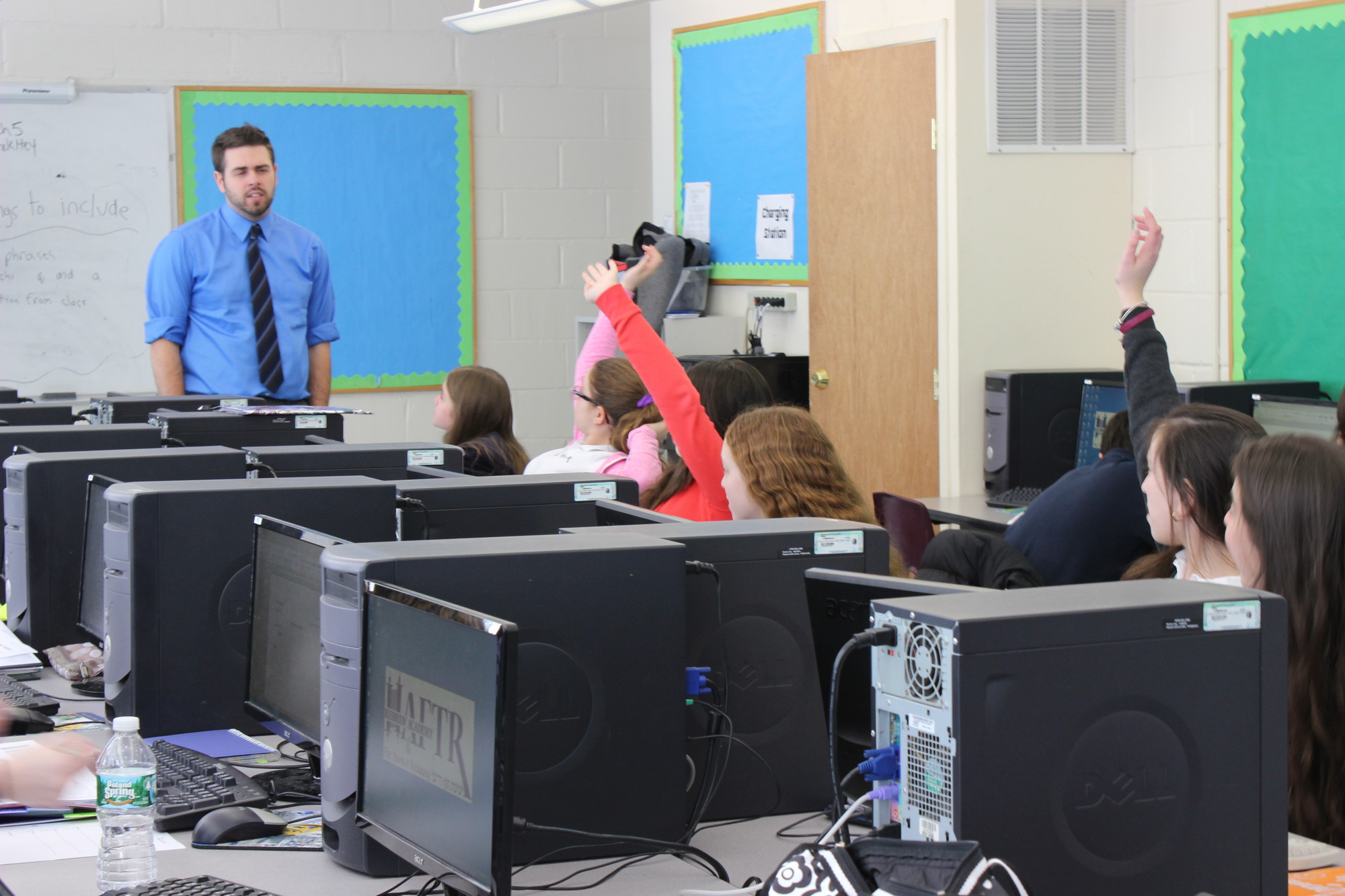Learning goes technical at HAFTR
It’s a new era for Hebrew Academy of the Five Towns and Rockaway (HAFTR) as teachers, administration and students have begun using: iPads, Wi-Fi and educational programs like Google Learning in all levels of the school.
Money from grants, donors and the school are the funding the new technology. A total amount was not disclosed. “There are so many variables to consider in the educational technology budget,” said David Lamm, HAFTR’s Education Technology coordinator. “It depends on the size of the school, Wi-Fi versus landlines, laptops versus tablets. We wanted to do this the right way. We opted to spend more on programs and making sure they were the ones we would best use, instead of buying several things and hoping they’d work out.”
Ben Gross, HAFTR’s new educational technology director, has assisted with the transition to include the new technology. “First we created a plan and infrastructure (setting up the classrooms to be wired for the new technology),” Gross said. “Then we had professional development, where the teachers learned how to use the new technology.”
In Rabbi Avi Weber’s HAFTR High School Talmud class, students watched a short YouTube video that Weber created, and worked together to submit answers to questions about the video. After students finished that assignment, they used a Google Documents form with their responses and submitted it to Weber electronically. Then Weber reviewed the forms showing all the students’ work, what they completed and understood from the assignment. “Right now, not all of my classes do this,” said Weber. “It depends on the dynamic of the class and the infrastructure of the school. Not all the classrooms have Wi-Fi. Potentially, a lesson like this could be conducted with all my classes.”
Perri Kaye’s pre-kindergarten class used an iPad, and set it up with several different educational applications (apps), or programs. “In the afternoon, we introduce a letter of the week, and the ABC Mouse app has short music videos for each letter,” Kaye said. “We also use the Handwriting Without Tears app, where they learn to trace and write their letters on the iPad. This helps them when they practice writing using pencil and paper in their handwriting books. These are just a few that we use in our room. The kids love it. They all want to use it.”
The school is ensuring that the technology learning matches the new Common Core standards. “Every time we do a project with teachers and administration, there are project lesson plans,” Gross said. “Common Core standards have to fit in with what we’re doing in the classrooms. But it’s easy to do, as so many computer programs out there include reading comprehension and math skills that are technology friendly.”
Cyndy Goldberg, HAFTR’s early childhood director, is excited about the technology program. “You never want to get away from the basics about education,” Goldberg said. “But, technology is the way of the future. We want to introduce technology education to our children as soon as possible. It’s not a substitute for our teachers and curriculum. It’s an enhancement.”

 63.0°,
A Few Clouds and Breezy
63.0°,
A Few Clouds and Breezy 




